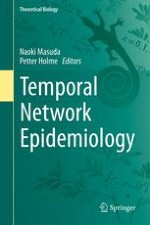2017 | OriginalPaper | Chapter
5. Mean Field at Distance One
Authors : Ka Yin Leung, Mirjam Kretzschmar, Odo Diekmann
Published in: Temporal Network Epidemiology
Publisher: Springer Singapore
Activate our intelligent search to find suitable subject content or patents.
Select sections of text to find matching patents with Artificial Intelligence. powered by
Select sections of text to find additional relevant content using AI-assisted search. powered by
